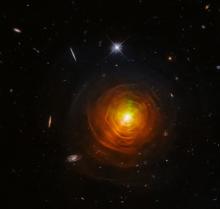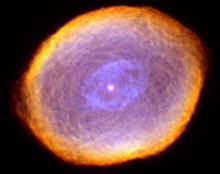Listen to today's episode of StarDate on the web the same day it airs in high-quality streaming audio without any extra ads or announcements. Choose a $8 one-month pass, or listen every day for a year for just $30.
You are here
Moon and Pollux
Pollux, the brighter “twin” of Gemini, stages a beautiful encounter with the Moon tonight. They’re quite close as they climb into good view, by 1:30 or 2. Castor, the other twin, stands above them.
Pollux looks bright for a couple of reasons. For one thing, it’s a close neighbor — just 34 light-years away. And for another, it really is bright — more than 30 times the Sun’s brightness. That’s because it’s a giant — a bloated star that’s nearing the end of its life. In fact, Pollux is the closest giant to the Sun.
A star becomes a giant when it’s converted the original hydrogen in its core to helium. It briefly burns through a shell of hydrogen around the core, then starts burning the helium. Pollux appears to be in the helium-burning phase.
Those changes make the core hotter. In turn, that makes the star’s outer layers puffier. Now, Pollux is nine times wider than the Sun. As it continues to evolve, it’ll get even bigger and brighter.
Pollux is only about 725 million years old, compared to four and a half billion years for the Sun. It became a giant at a much younger age because it’s twice as massive as the Sun, and heavier stars consume their nuclear fuel more quickly.
Pollux will remain a giant for a few hundred million years. Then it will expel its outer layers, leaving only its hot, dead core. That whole process will play out in the Sun as well — beginning in about six billion years.
Script by Damond Benningfield






